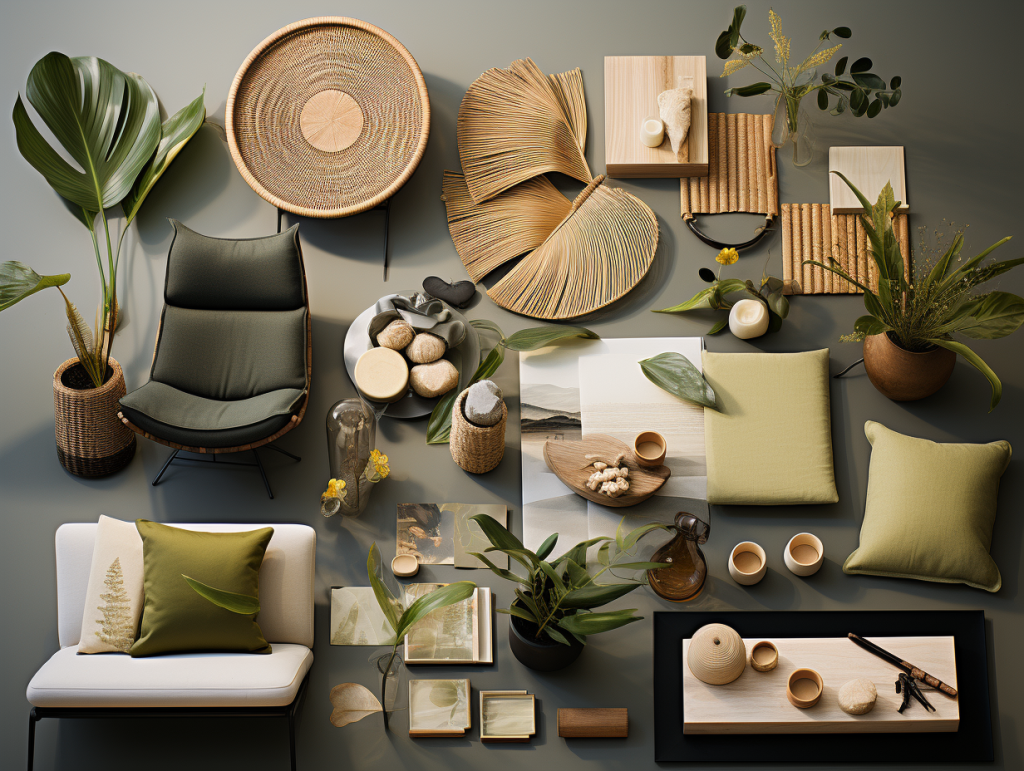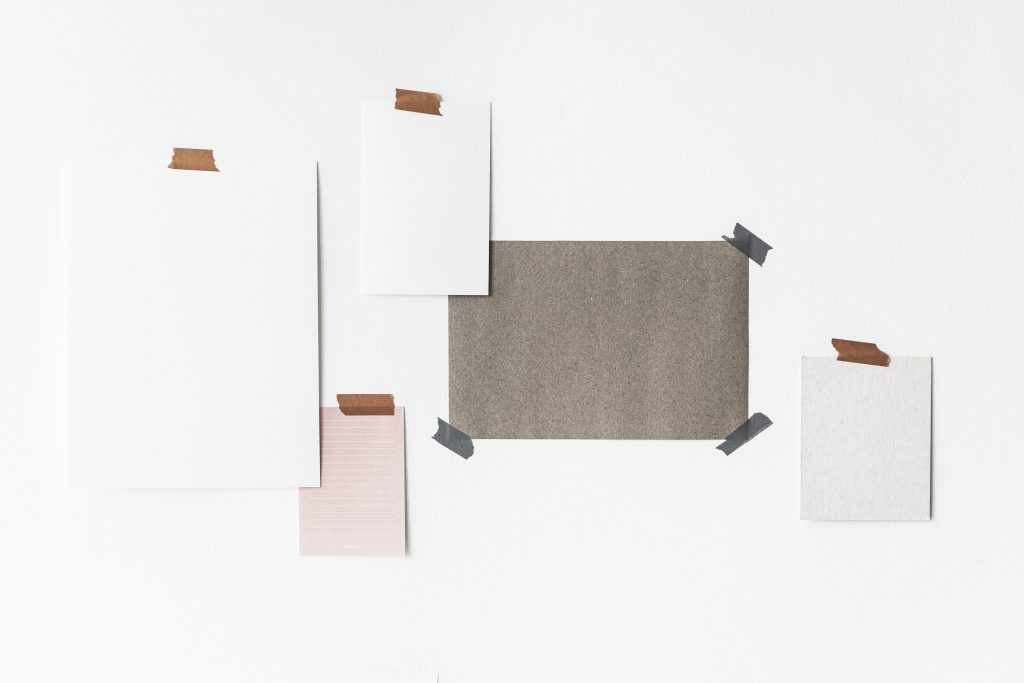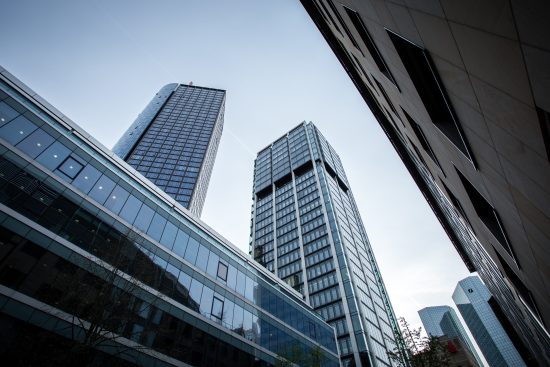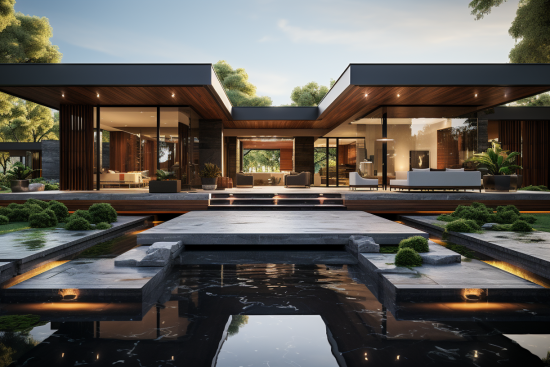What is a Mood Board in Interior Design?

So, like, a mood board in interior design is basically a visual tool that designers use to get their creative juices flowing and figure out the vibe they want for a project. It’s like a big ol’ collage of images, colors, textures, and materials that represent the style and feel the designer is going for. They can include anything from fabric swatches to magazine clippings to paint samples – basically, anything that helps capture the overall look and mood of a room or space. And let me tell ya, it’s super useful for both the designer and the client to get on the same page about the direction of the project. Plus, it’s a fun way to play around with different ideas and see how they all come together. So next time you’re starting a design project, don’t forget to whip up a mood board to get those creative vibes flowing, ya know? In interior design, a mood board is a visual tool that designers use to spark their creativity and determine the atmosphere they want for a project. It’s like a large collage of images, colors, textures, and materials that represent the designer’s desired style and ambiance. It can include fabric samples, magazine cutouts, and paint swatches – essentially anything that helps capture the overall look and feel of a room or space. Not only is it helpful for the designer and client to align on the project’s direction, but it’s also a enjoyable way to experiment with different ideas and see how they complement each other. So, the next time you embark on a design project, don’t forget to create a mood board to inspire those creative vibes.
How to Use Mood Boards for Design Inspiration

Mood boards are a great tool for gathering design inspiration and creating a cohesive visual concept for any project. To use a mood board effectively, start by defining the theme or concept of your design. Collect images, colors, textures, and typography that relate to your theme and arrange them on a physical or digital board. Look for inspiration from a variety of sources such as magazines, photography, art, and even nature. As you gather your materials, pay attention to the mood and emotions they evoke and how they relate to your design concept. Organize your images in a way that tells a story and conveys the feeling you want to capture. Use the mood board as a reference point throughout your design process to ensure that your work stays true to the original inspiration. By harnessing the power of visual imagery, a well-curated mood board can guide your creativity and bring your design ideas to life.
Tools and Resources for Creating Mood Boards

Tools Creating mood boards is an essential part of the design process, and there are various tools and resources available to help designers bring their vision to life. Online platforms like Canva and Adobe Spark offer easy-to-use templates and design elements for creating digital mood boards, while physical materials like magazines, fabric swatches, and paint chips can be utilized for more traditional, hands-on mood board creation. Additionally, websites like Pinterest and Tumblr are great for sourcing inspiration and images for mood boards. and Resources for Creating Mood Boards
Utilizing Templates for Interior Design Mood Boards
Utilizing templates for interior design mood boards can be a highly effective way to streamline the design process and present ideas to clients in a visually appealing way. By using pre-made templates, designers can save time and ensure a cohesive look across all of their mood boards. Templates can also help designers experiment with different layouts, color schemes, and textures to find the right combination for a specific project. Additionally, templates provide a consistent framework for organizing and arranging images, fabric swatches, paint samples, and other design elements. This can be particularly useful for designers who work on multiple projects at once and need to stay organized. Furthermore, templates can be customized to reflect a designer’s personal style and branding, allowing for a professional and polished presentation of their design concepts. Overall, utilizing templates for interior design mood boards can enhance the efficiency and creativity of the design process while delivering a high-quality end result to clients.
Exploring Design Software for Mood Board Creation
Exploring design software for mood board creation can open up a world of creative possibilities. Software such as Adobe Photoshop, Illustrator, or InDesign allows designers to bring together images, colors, textures, and typography to visually communicate a concept or idea. These powerful tools provide a range of functionalities that enable users to experiment with layout, composition, and visual elements, ultimately leading to the creation of compelling mood boards. Additionally, there are also online platforms and apps specifically designed for mood board creation, offering intuitive interfaces and pre-designed templates to streamline the process. By exploring different design software options, designers can find the right fit for their specific needs and preferences, whether it’s the flexibility of Photoshop or the precision of Illustrator. Ultimately, having a strong understanding of design software can enhance a designer’s ability to express their creative vision and effectively communicate with clients and collaborators.
Finding Design Inspiration on Pinterest for Mood Boards
When it comes to creating mood boards, Pinterest is a goldmine for design inspiration. With its vast array of images, you can easily find the perfect visuals to convey the mood and aesthetic you’re aiming for. Whether it’s for a graphic design project, home decor, or event planning, Pinterest offers an endless supply of ideas to spark your creativity. By simply typing in keywords related to your theme or concept, you can uncover a multitude of images, color schemes, patterns, and textures that resonate with your vision. You can organize these findings into a cohesive mood board, providing a visual representation of the atmosphere and style you want to achieve. Pinterest allows you to gather and curate a diverse range of images, helping you to refine your ideas and hone in on the design elements that best capture the essence of your project. In essence, Pinterest is a treasure trove of design inspiration, making it an invaluable tool for creating mood boards that truly reflect your vision.
Tips and Tricks for Making an Impactful Interior Design Mood Board

Creating an impactful interior design mood board is crucial for conveying your vision and ideas to clients and collaborators. To make your mood board truly stand out, consider these tips and tricks. First, start by gathering a diverse range of images, textures, and materials that reflect your design direction. Incorporate a variety of sources, including magazine clippings, fabric swatches, and digital images, to bring depth and richness to your board. Next, focus on creating a cohesive color palette that captures the mood and atmosphere you want to achieve. Use color swatches and paint chips to accurately represent the tones you have in mind. Additionally, don’t forget to include elements of inspiration such as photographs, quotes, and sketches to add a personal touch and tell a story with your board. Lastly, arrange all the elements in a visually appealing and organized manner, ensuring that the overall composition effectively communicates your design concept. By following these tips and tricks, you can create an impactful interior design mood board that effectively communicates your creative vision to others.





